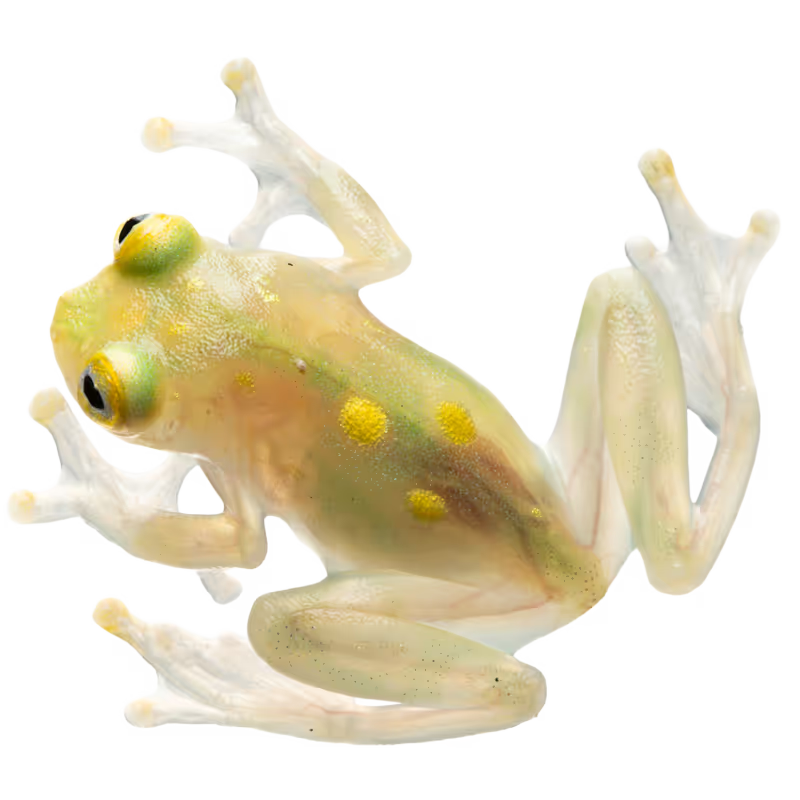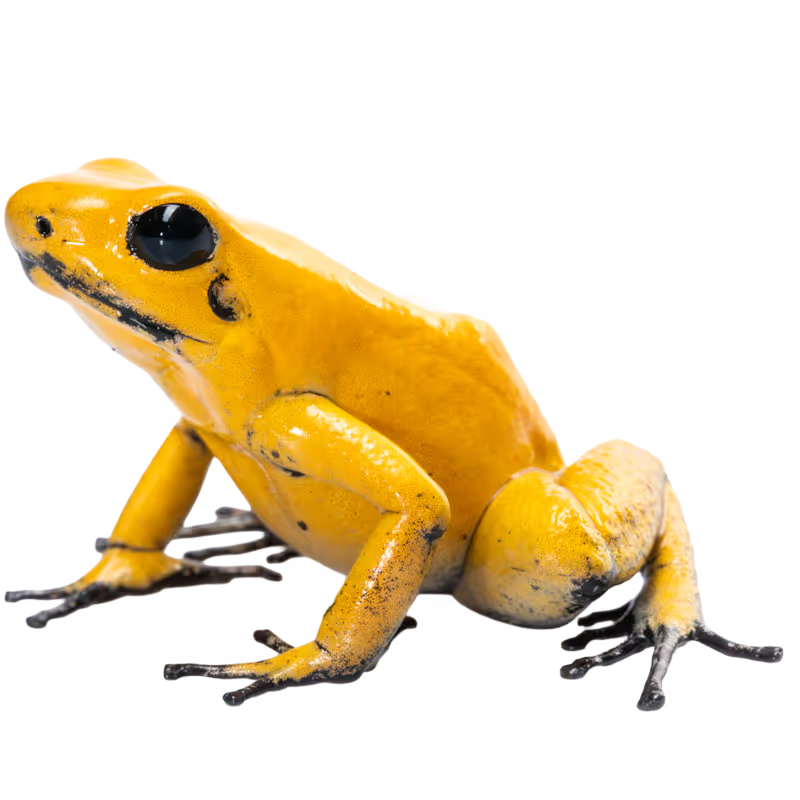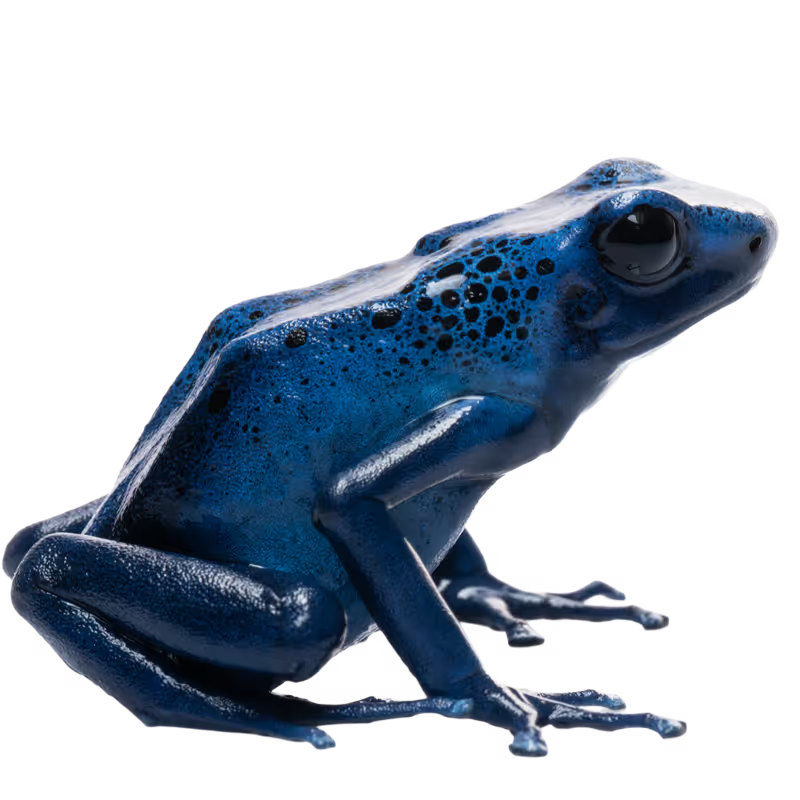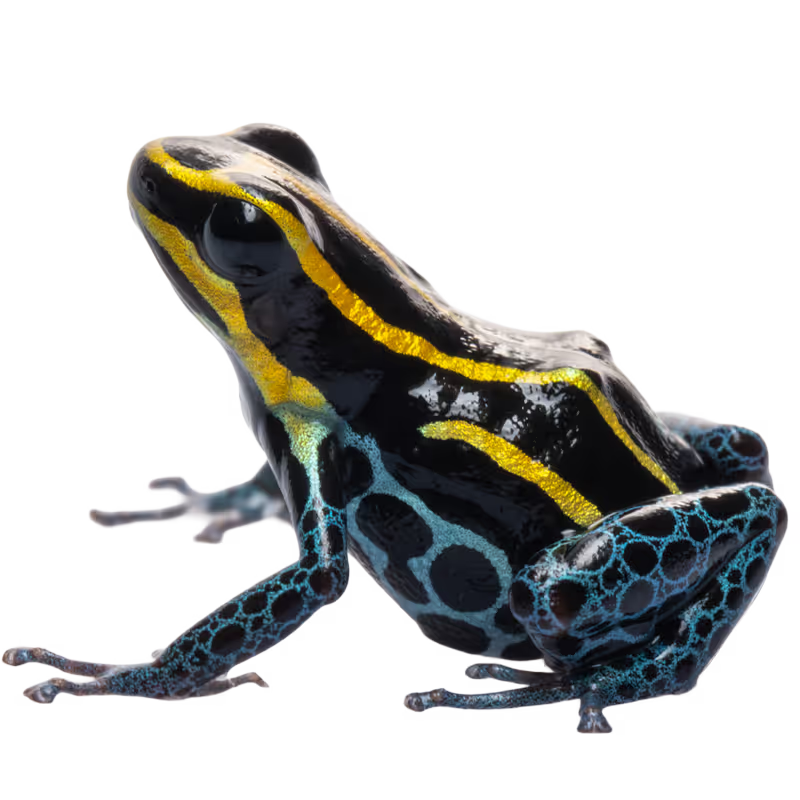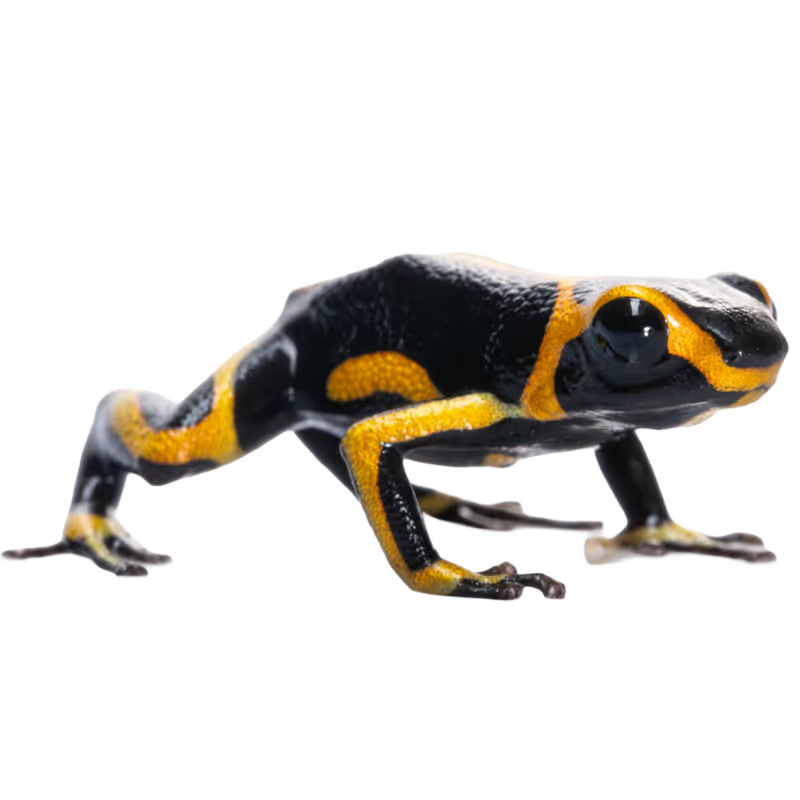Why Research Frogs?
We use frogs to answer questions important for human and planetary health that are difficult to address in other traditional laboratory research organisms.

Variability in Social Behavior
Frogs exhibit a remarkable range of social behaviors, from paternal care to female aggression to tadpole begging behavior. This diversity allows us to investigate the neural and genetic mechanisms that drive complex behaviors and their evolution.

Ectotherms Sensitive to Change
As ectothermic (cold-blooded) animals, frogs are particularly sensitive to changes in their environment, making them excellent indicators of how extreme weather and habitat destruction impact ecosystems.

Relatively Simple Nervous Systems
Frogs have nervous systems that are less complex than those of mammals, providing a streamlined model to study the fundamental building blocks of neural circuits and behavior.

Unique Physiological Traits
Many frog species possess specialized adaptations. These traits allow us to explore how animals protect themselves from environmental toxins and observe organ function in vivo, offering valuable insights into physiological processes.
Animal Colony
Our lab maintains an amphibian colony to investigate the neural, physiological, and genetic mechanisms underlying their complex social and parental behaviors.
Frogs are ideal for studying these phenomena due to their remarkable behavioral diversity, including varied parental care strategies, ranging from no care to biparental investment. In addition to behavior, we explore their unique physiological adaptations, such as toxin sequestration, providing insights into how animals interact with and adapt to their environments. Our colony supports both research and educational outreach, offering hands-on opportunities for students and educators to engage with cutting-edge science.
Fieldwork
Fieldwork is essential for understanding animals in their natural habitats, offering insights into the ecological and evolutionary contexts that shape behavior, physiology, and biodiversity.
By observing species in their natural environments, we uncover patterns and processes that cannot be fully replicated in laboratory settings. Fieldwork provides critical data to complement controlled studies, enriching our understanding of the natural world. Our lab recognizes the complex history of scientific research in many biodiverse regions, where the benefits of discoveries have not always been equitably shared. We are committed to working collaboratively with local scientists, institutions, and communities in the regions where we conduct fieldwork. Together, we strive to co-develop research questions, share resources, and ensure that our work contributes to local scientific priorities. This partnership-driven approach not only enhances the quality and impact of our research but also promotes inclusivity and respect in scientific endeavors. Fieldwork is more than data collection—it is an opportunity to learn, build relationships, and contribute meaningfully to the global scientific community.

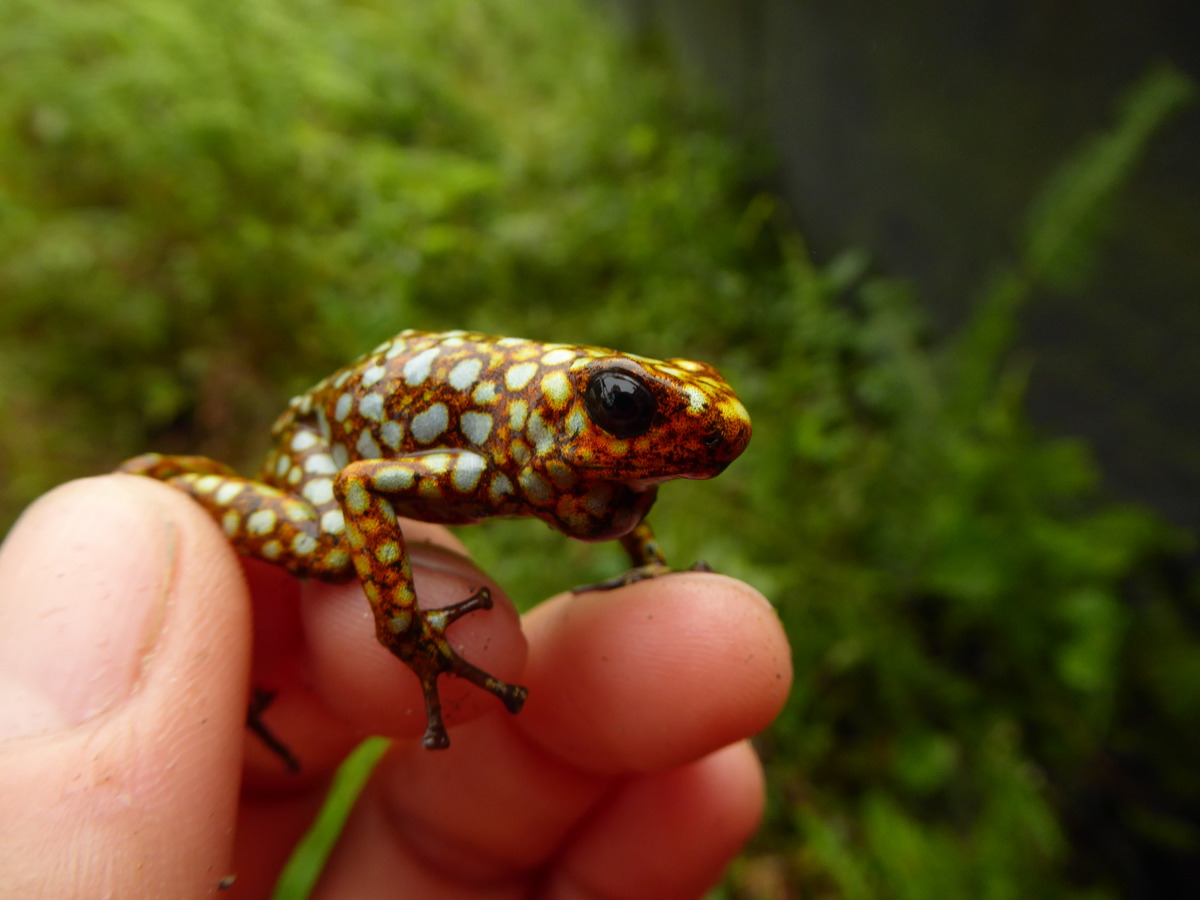

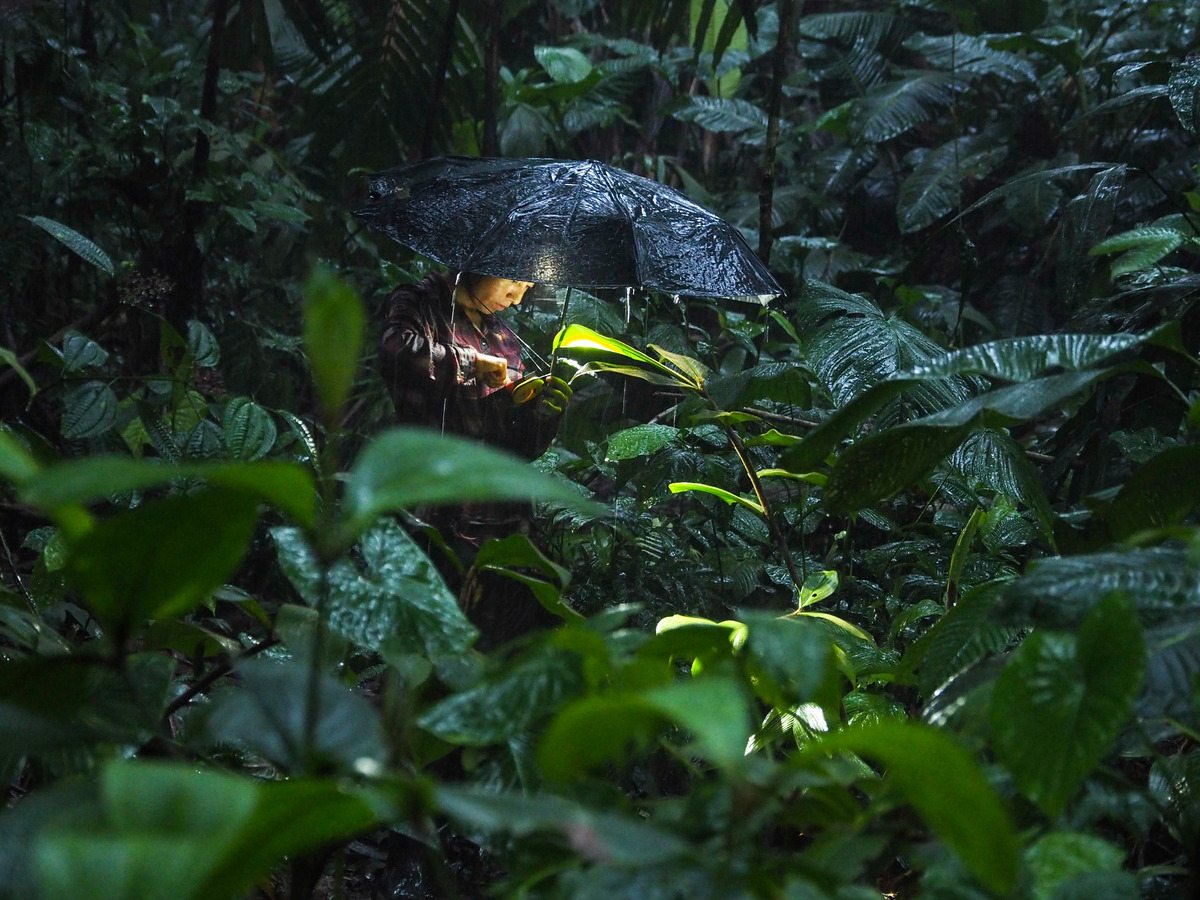



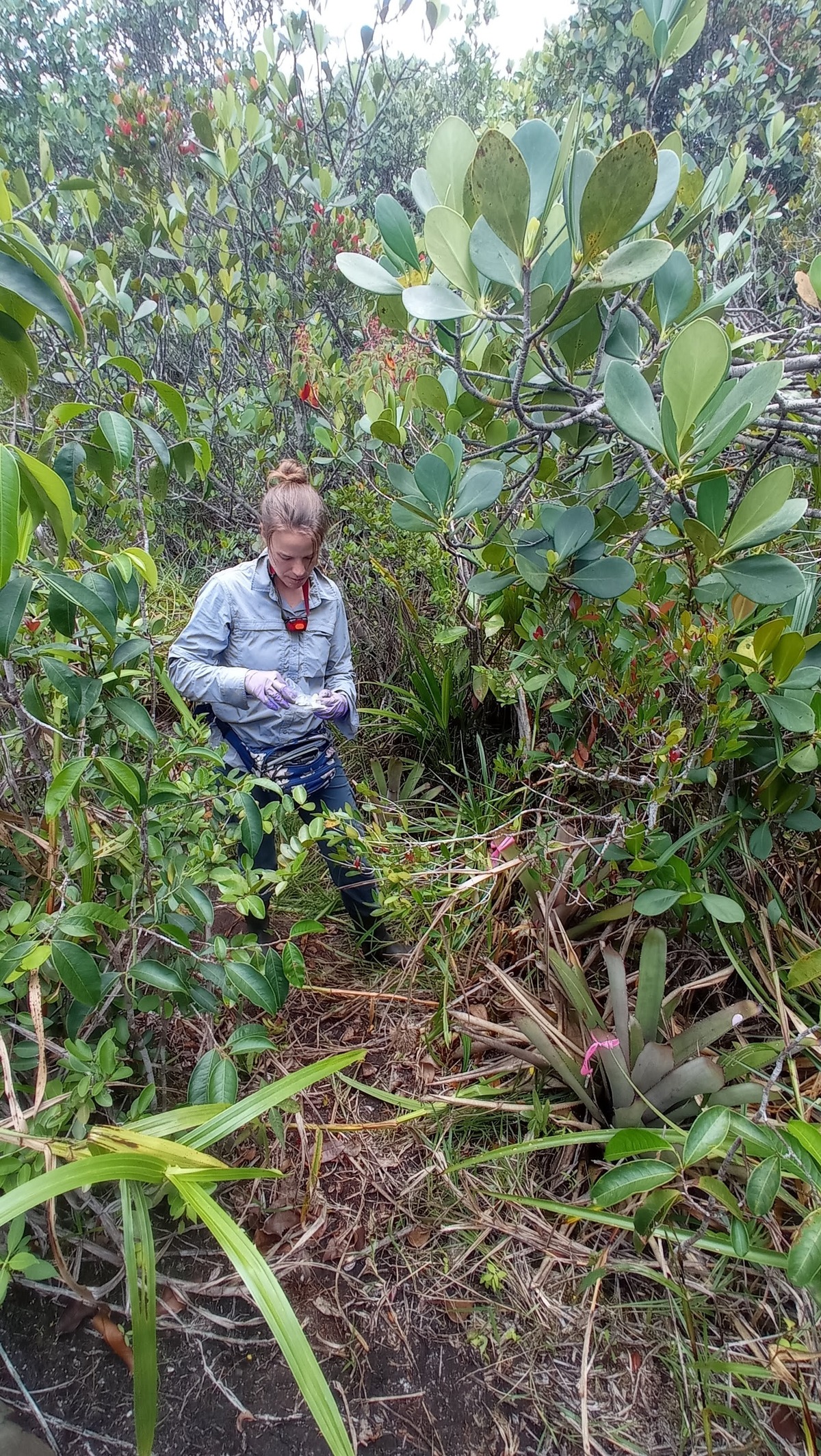
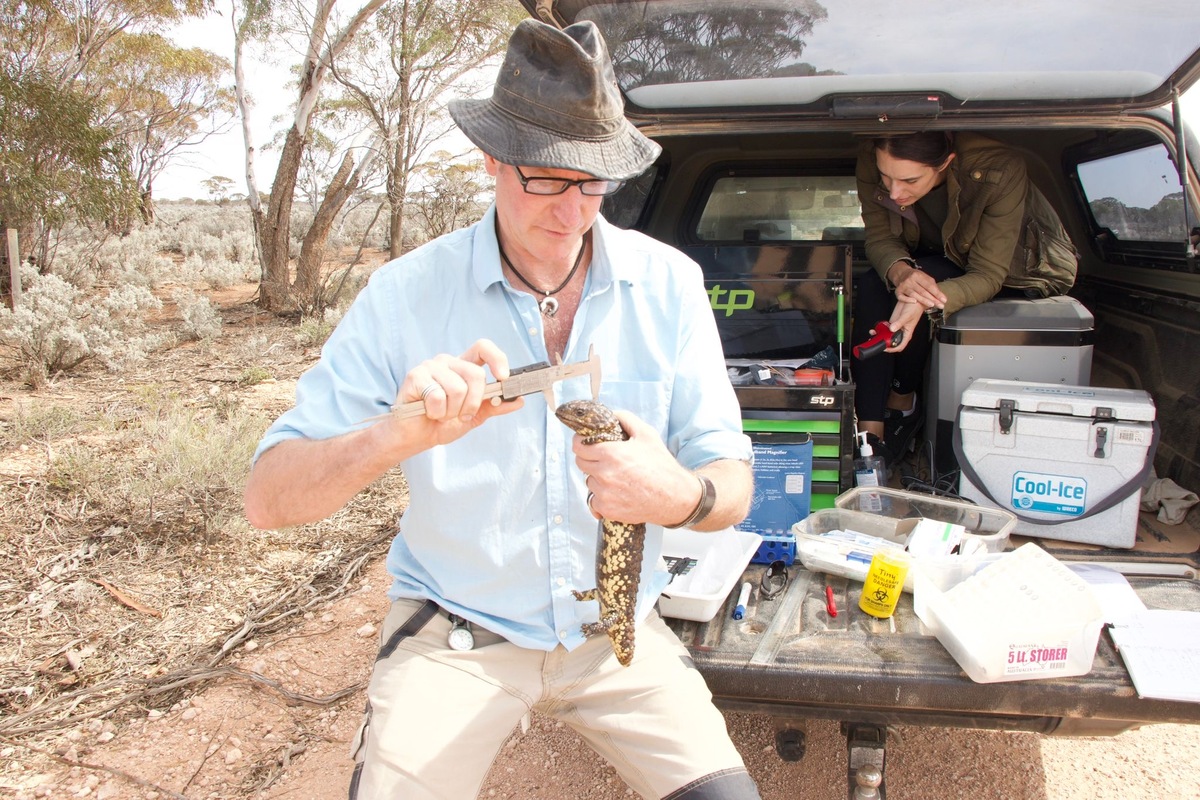
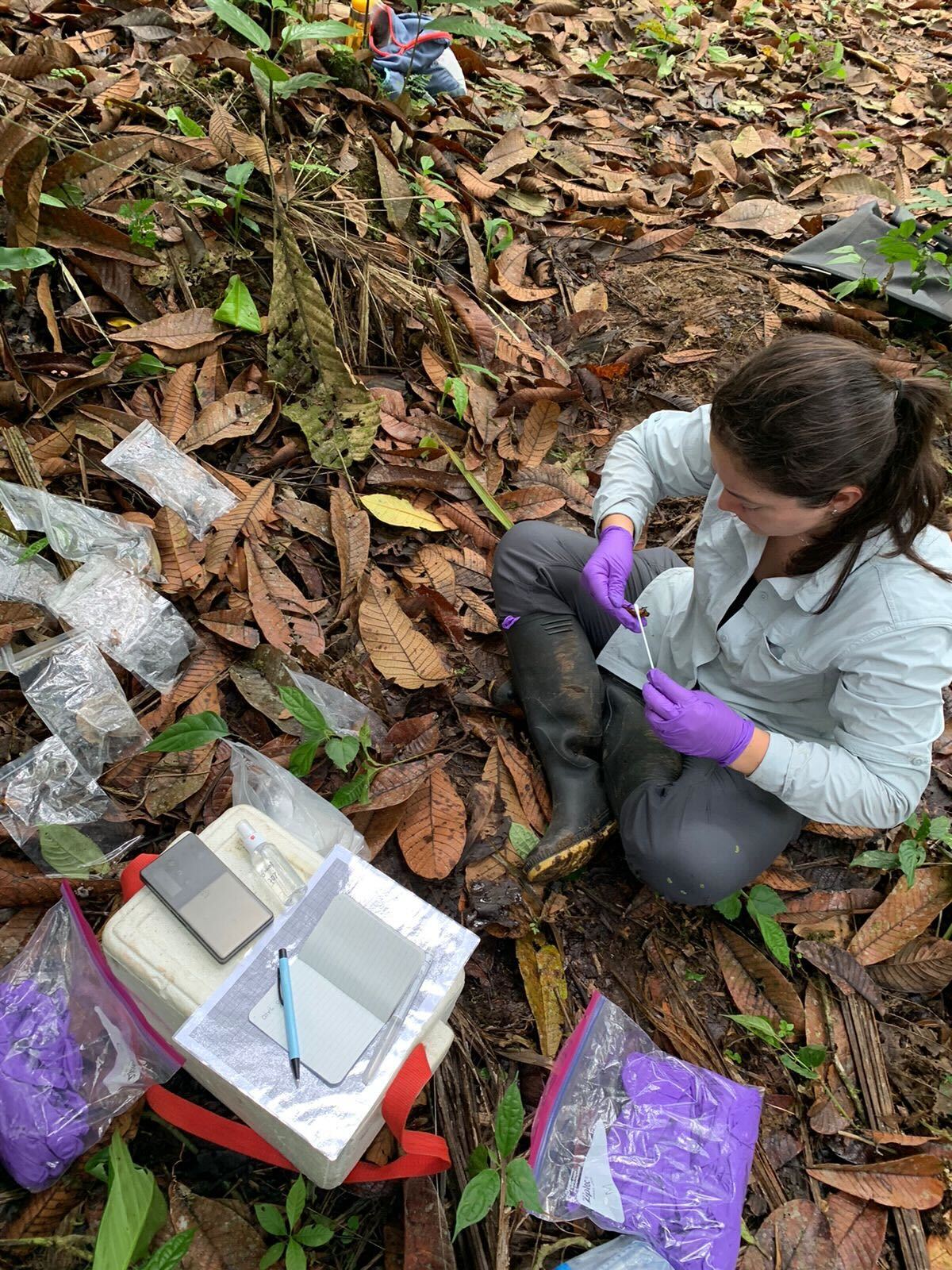
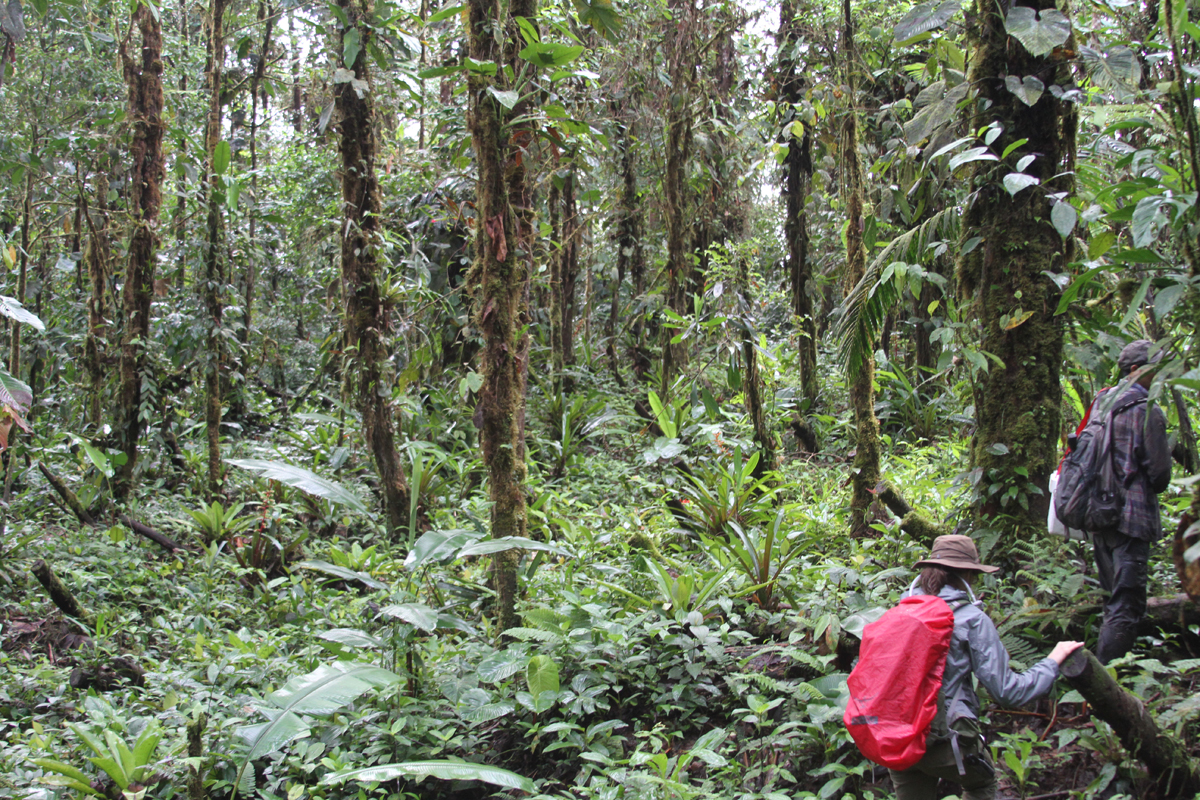
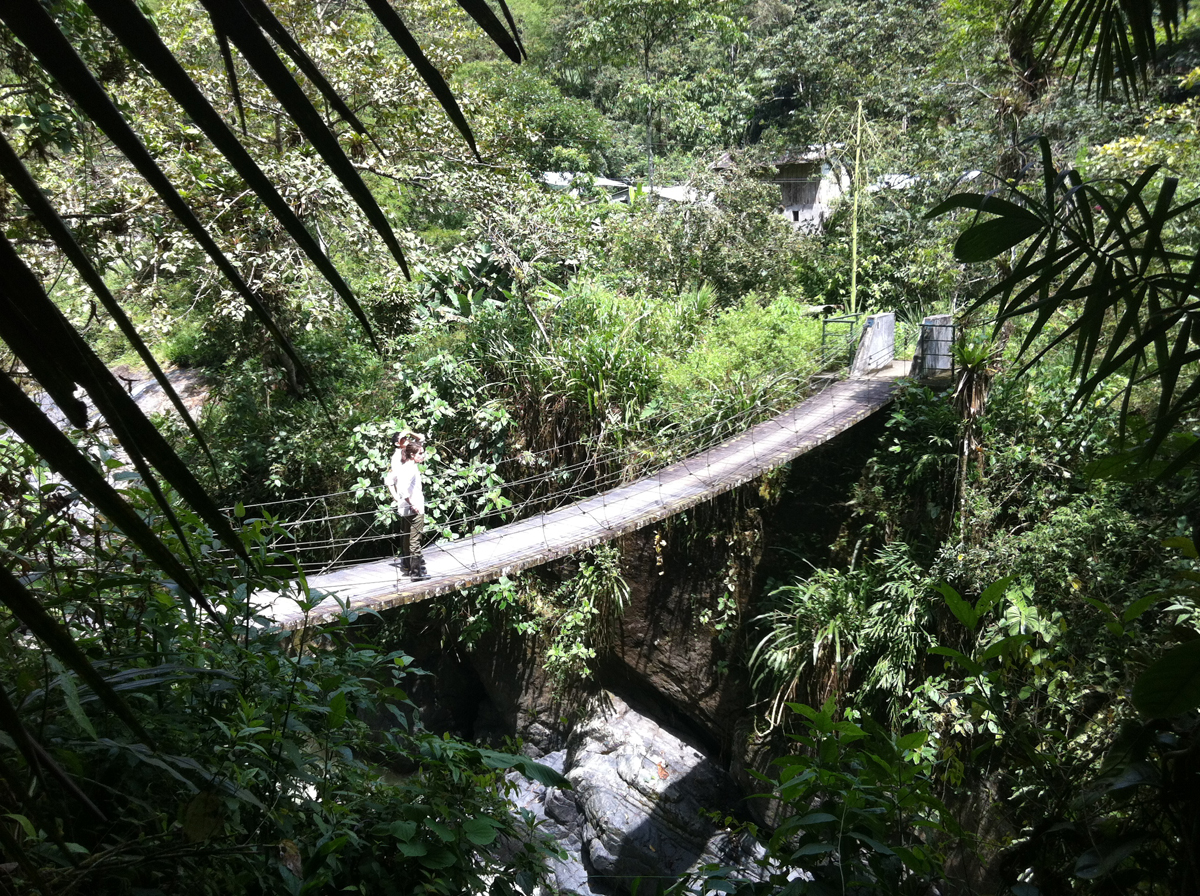

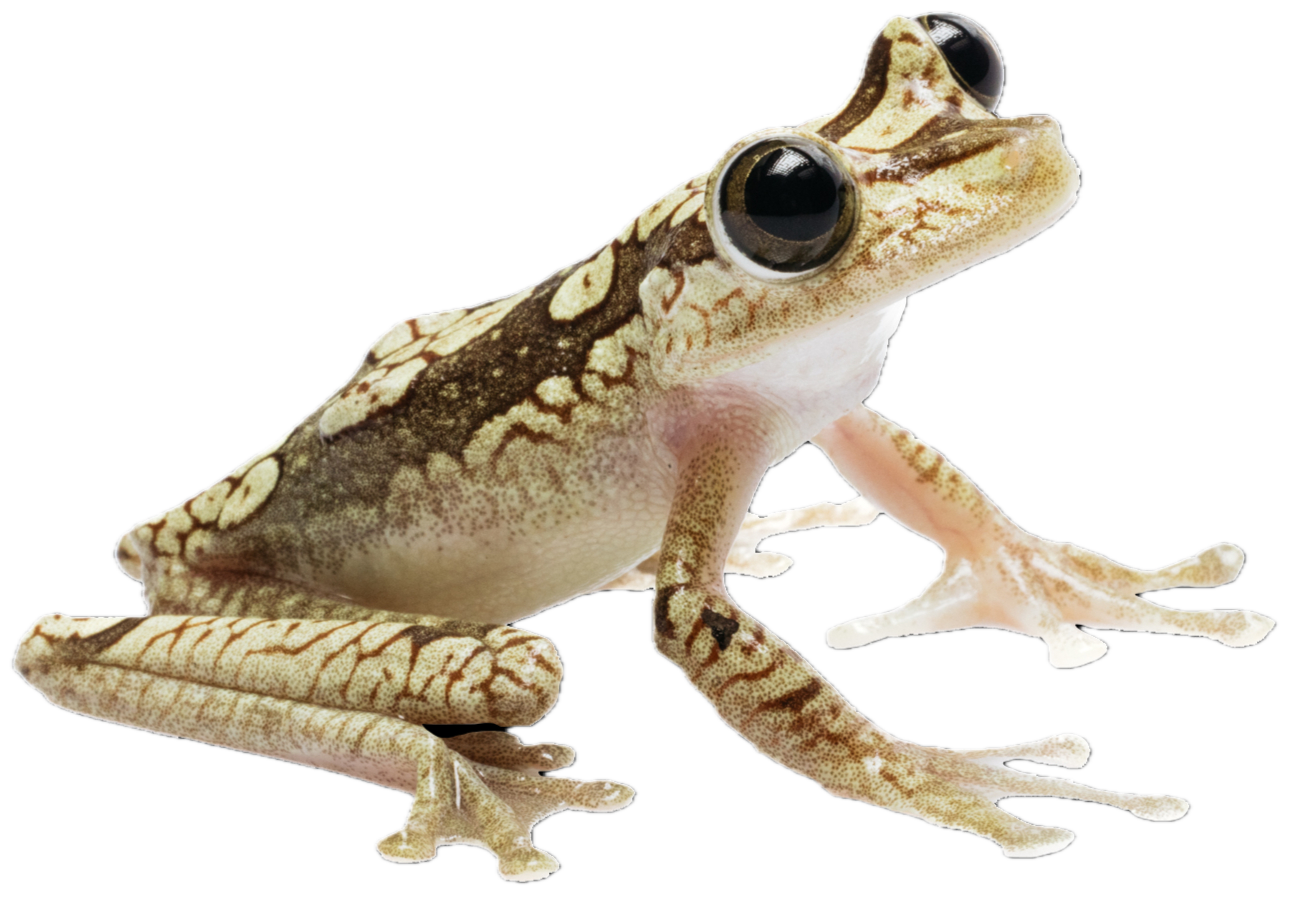


.png)
.png)
